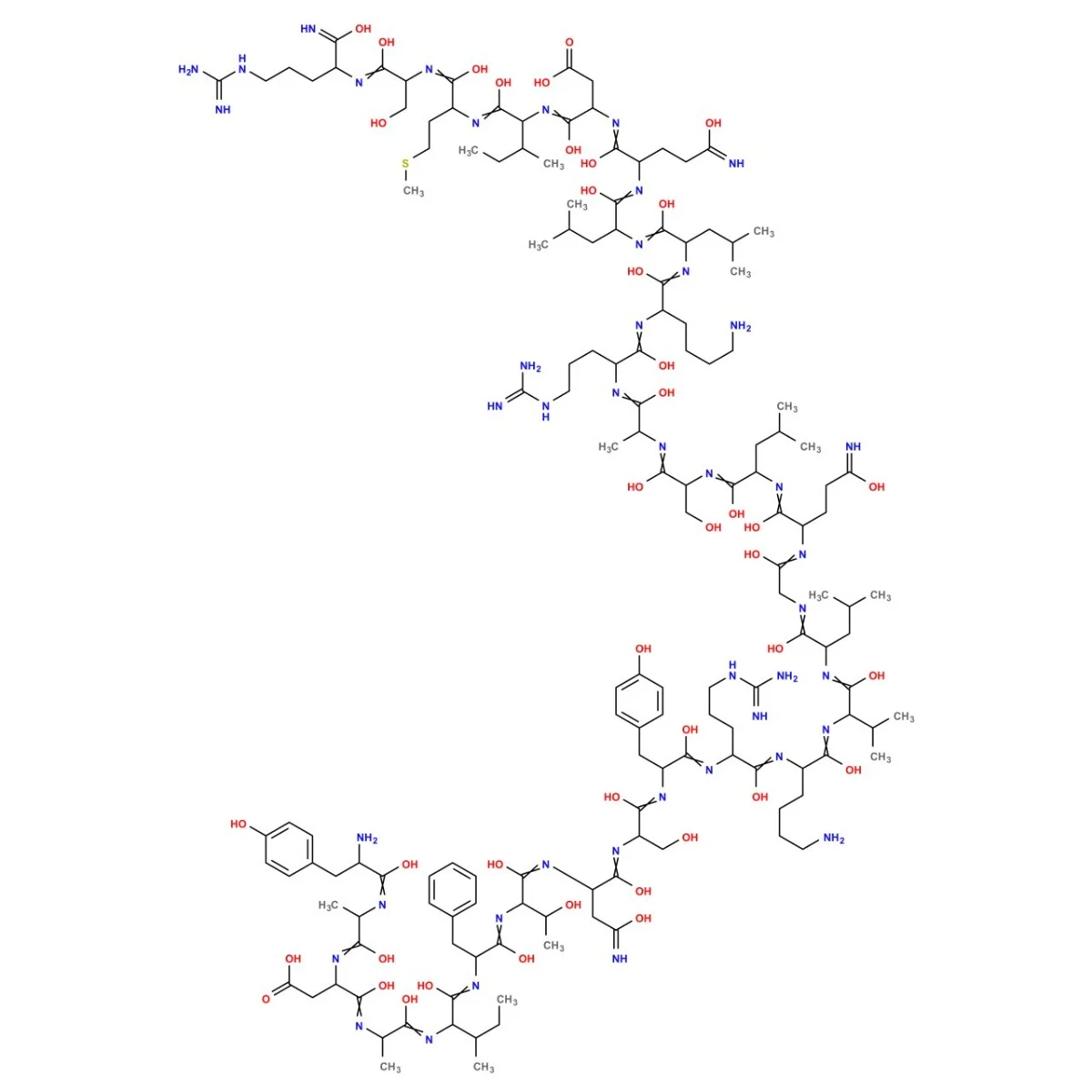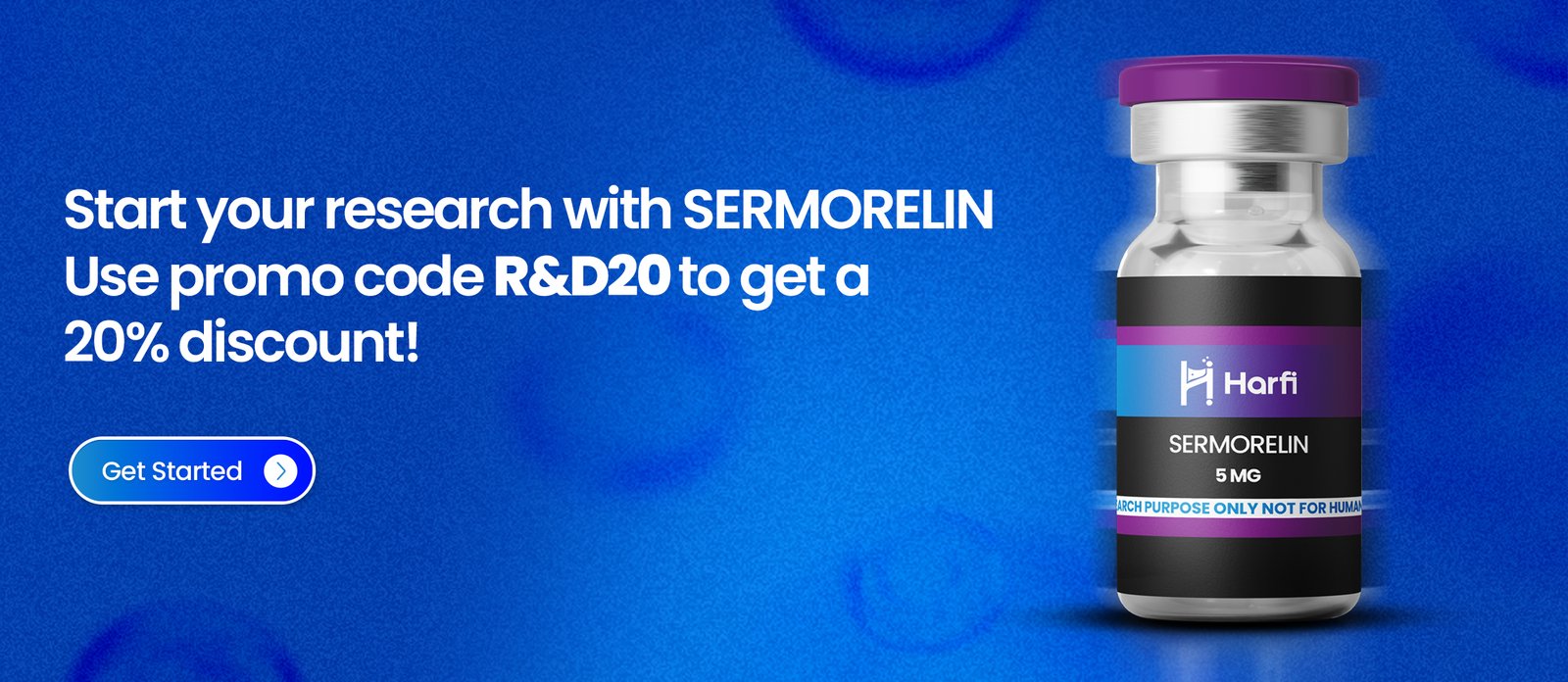Sermorelin Acetate
Sermorelin, a growth hormone-releasing hormone (GHRH) analogue, has been used to evaluate and stimulate natural growth hormone secretion. Researchers are particularly interested in its potential to enhance bone density, minimize scarring, combat the effects of dementia, and reduce seizure activity.
What Is Sermorelin?
Sermorelin is a growth hormone-releasing hormone (GHRH) analogue designed to retain the beneficial effects of natural GHRH while minimizing unwanted side effects. Clinically, Sermorelin (Geref) is used to evaluate growth hormone secretion. However, researchers are also exploring its potential benefits, including:
- Reducing scarring after a heart attack
- Increasing bone density
- Enhancing nutrition in chronic illness
- Improving kidney function
- Combating the effects of dementia
- Reducing seizure activity
Product Usage
This product is intended for research purposes only. It is strictly designated for in vitro testing and laboratory experimentation. All information provided on this website is for educational purposes only. Any introduction into humans or animals is strictly prohibited by law. Only licensed, qualified professionals should handle this product. It is not a drug, food, or cosmetic and must not be misbranded, misused, or mislabeled as such.
Sermorelin Peptide Structure

Sequence: Tyr-DL-Ala-DL-Asp-DL-Ala-DL-xiIle-DL-Phe-DL-xiThr-DL-Asn-DL-Ser-DL-Tyr-DL-Arg-DL-Lys-DL-Val-DL-Leu-Gly-DL-Gln-DL-Leu-DL-Ser-DL-Ala-DL-Arg-DL-Lys-DL-Leu-DL-Leu-DL-Gln-DL-Asp-DL-xiIle-DL-Met-DL-Ser-DL-Arg
Molecular Formula: C149H246N44O42S
Molecular Weight: 3357.933 g/mol
PubChem CID: 16129620
Research on Sermorelin Peptide
1. Sermorelin and Heart Health
A heart attack can lead to long-term complications such as heart failure, arrhythmias, reduced exercise capacity, and chronic pain. Many of these issues stem from cardiac remodeling, a process in which damaged heart muscle cells (myocytes) cause scarring in both affected and unaffected areas. Preventing this remodeling can significantly improve recovery and long-term heart health.
A 2016 study in pigs demonstrated that sermorelin can reduce post-heart attack remodeling by:
- Protecting cardiomyocytes from cell death
- Promoting extracellular matrix production for proper healing
- Stimulating blood vessel growth in damaged tissue
- Reducing inflammatory substances that contribute to further damage
These effects translate to improved diastolic function, smaller scar formation, and enhanced capillary growth. Ongoing research is exploring sermorelin’s potential in treating other heart conditions, including heart failure and valve disorders.
2. Sermorelin and Epilepsy
Gamma-aminobutyric acid (GABA) is a neurotransmitter that reduces electrical activity in the central nervous system, playing a key role in controlling seizures. Many anti-seizure medications work by either increasing GABA levels or mimicking its effects.
Recent research in mice suggests that GHRH analogues like sermorelin may help suppress seizures by activating GABA receptors. This discovery is particularly exciting, as current epilepsy treatments often have significant side effects. Researchers continue to explore sermorelin’s potential as a safer alternative for seizure management.
3. Sermorelin and Sleep
Sleep cycles are largely regulated by orexin, a neurochemical essential for maintaining wakefulness and sleep balance. Growth hormone secretion, crucial for tissue growth and repair, primarily occurs during sleep.
Studies in rainbow trout have shown that an intact GHRH system is necessary for proper orexin function. Additionally, administering sermorelin and other GHRH agonists has been found to boost orexin secretion. These findings suggest that sermorelin may have therapeutic potential for sleep disorders, an area of active research.
4. Why Sermorelin Is Preferred Over Growth Hormone
Sermorelin, as a GHRH derivative, produces the same benefits as growth hormone (GH), such as increased muscle mass, bone growth, and fat reduction. However, it has distinct advantages over direct GH administration:
- Better Regulation: Sermorelin is naturally controlled by the body’s feedback mechanisms, reducing risks of overdose, improper dosing, and side effects like edema, joint pain, and hormonal imbalances.
- No Tachyphylaxis: Unlike GH, which can cause the body to become resistant over time (requiring higher doses), sermorelin promotes sustained effectiveness. Instead of downregulating GHRH receptors, it increases their production, ensuring long-term efficacy without the need for escalating doses.
Sermorelin has shown moderate side effects, excellent subcutaneous bioavailability in mice, and is strictly intended for educational and scientific research. It is not approved for human consumption. Sermorelin is available only for licensed researchers.
DISCLAIMER: FOR INFORMATIONAL AND EDUCATIONAL PURPOSES ONLY
All articles and product details provided on this website are strictly for informational and educational purposes.
The product information presented here applies solely to in-vitro studies—experiments conducted outside of living organisms, such as in laboratory settings. These products are not classified as medicines or drugs and have not been approved by the FDA for the prevention, treatment, or cure of any medical conditions, ailments, or diseases.
Furthermore, the use of these products in humans or animals is strictly prohibited by law.

